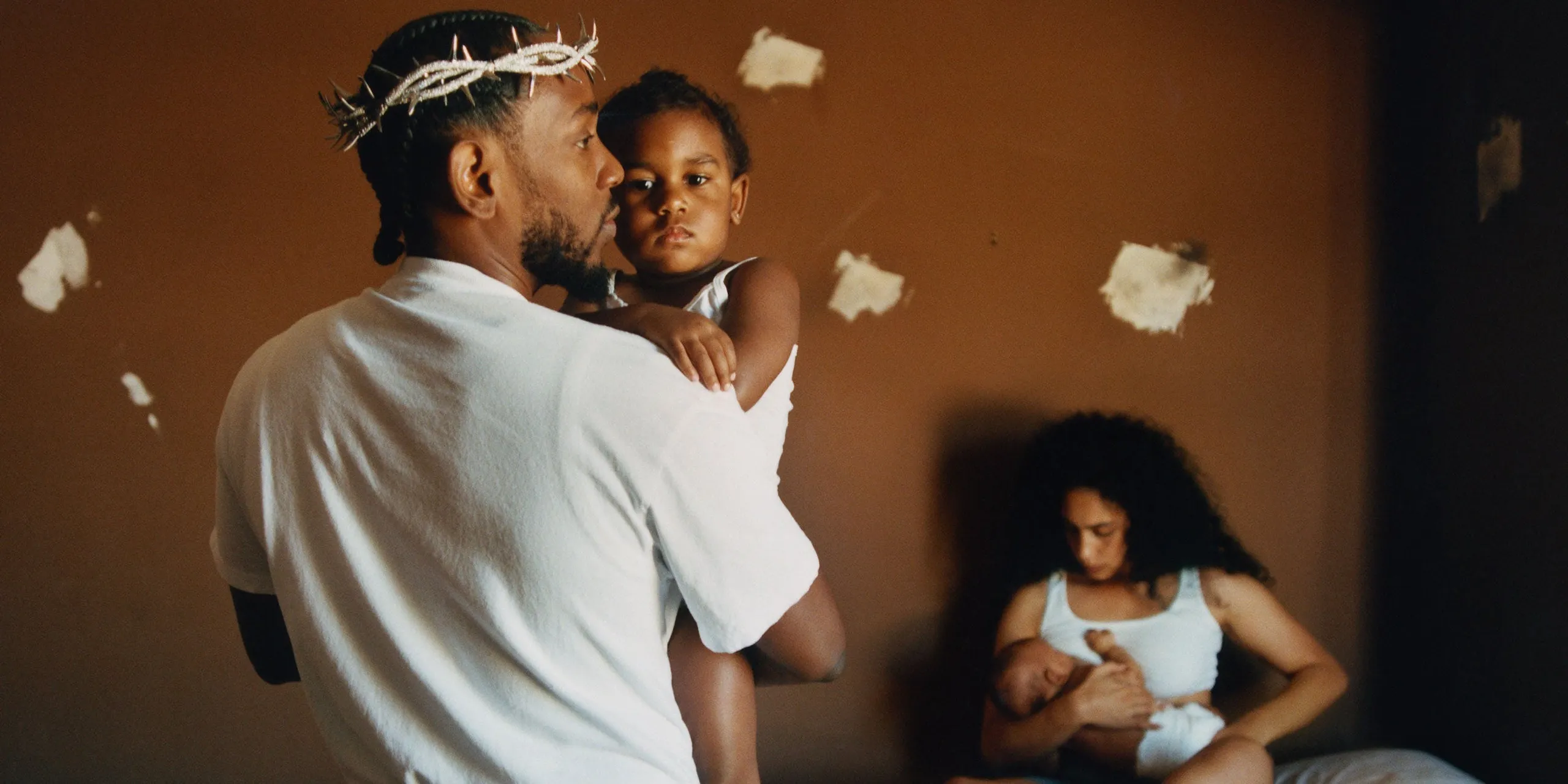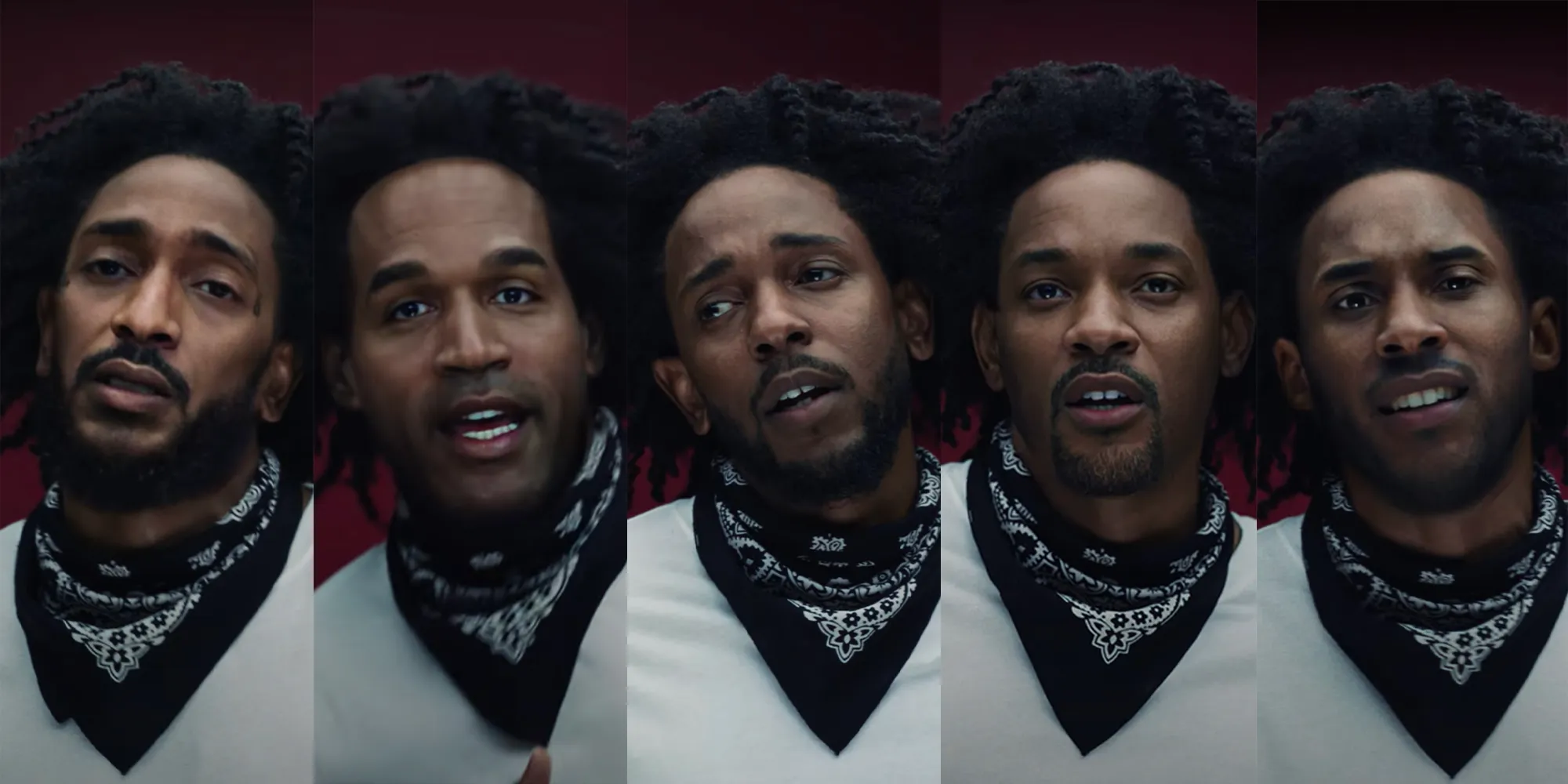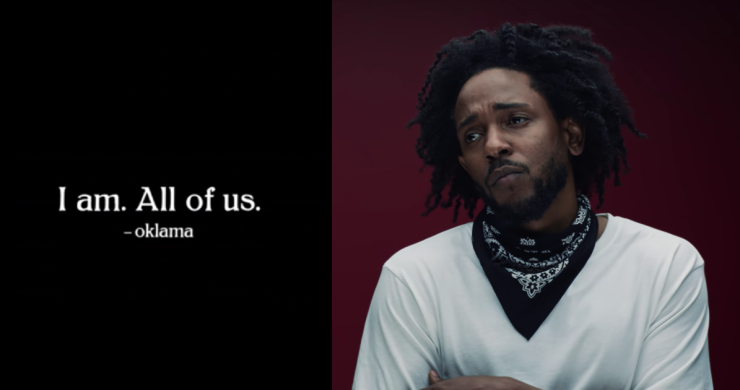Kendrick is back AND so are the deep fake conversations.

We’ve been waiting for five years for a new Kendrick Lamar project. And he didn’t disappoint.
Kendrick released the latest of his Heart series, The Heart Part 5. There’s not many artists that have you lying down, listening to an album from start to finish, because you know the levels before you’ve even listened.
As soon as he releases anything, everyone jumps on Genius, Reddit and Twitter to dissect every lyric, reference and share interpretations of his videos. Certain artists –– that don’t buy in to or adhere to what people expect from “celebrity culture”, like Kendrick and Frank Ocean –– are so talented and conceptual that everything they do is seen as part of the art. If Kendrick was photographed in a T-shirt with a question mark on it, Reddit would go mental.

I’m not going to try and dissect the meaning of the video –– if you’re interested in that check out this Reddit thread. But I am going to talk about the tech used in the video, and why the medium he chose has sparked conversation.
In Kendrick’s video his face changes from Nipsey Hussle, to OJ Simpson, to Kobe and more.
This was made possible by the use of deep fake technology. Deepfakes are videos of an individual in which their face or body has been digitally altered so that they appear to be someone else.
This tech isn’t new – it’s been used for years – but mostly by Hollywood CGI teams with a lot of cash. These deepfakes were created by by Deep Voodoo, a studio run by the South Park creators Matt Stone & Trey Parker.

When it comes to deepfake technology –– historically –– most of the conversations have been around ethics and the negative potential the technology poses in politics and news. The tech has the ability to spread fake narratives, distort democratic conversation, manipulate elections and more.
As with all new tech, what we’re now seeing is the democratization of it –– which opens up a new avenue of creativity –– for good and for bad. When this happens, we hear conversations around ethics and sometimes laws created about the use of the tech. For example, California State made it illegal to create or distribute deepfakes of politicians within 60 days of an election. Check out the example of Obama calling Trump a dipshit (I wish this one was real to be honest).
In 2016, Adobe unveiled Project Voco which made it possible to take an audio recording and rapidly alter it to include words and phrases the original speaker never said –– in their voice. After ethical concerns, Adobe never released the tech and it was shelved. One of the big issues with creating laws around deep fakes is that if the imagery used is in the public domain and isn’t “owned” by anyone –– then technically it’s up for grabs.
In terms of ethics, there has been lots of conversation around whether people should be deepfaked without their permission, because they can cause distress and damaging consequences. In this instance, I’d assume Kendrick spoke to the individuals and the families of Nipsey and Kobe to share his vision and he uses the tech to drive a necessary and complex conversation –– so it feels like a good use of the technology. But this isn’t always the case. Imagine someone putting your face in a porn scene, and that video being shared round your work and family? That stuff happens –– so it’s hard to know exactly where the line is.
Kendrick uses the tech to embody each of the people he morphs into, showing the importance of perspective, which creates an audio-visual narrative that reflects the sort of complex storytelling the rapper is loved for. The topics Kendrick discusses and his lyrics are often thought-provoking, crucial and unsettling. It doesn’t feel like a coincidence that he’s used a Black Mirror-esque medium to deliver them.

I can’t speak for the families and friends of the individuals used, especially Nipsey and Kobe, but in my opinion Kendrick’s video proves that in the right hands, with the right agenda, technology can be used as a tool to strengthen artistic expression and to drive important conversation. Kendrick leverages the medium (used regularly to inspire misunderstanding and manipulate narratives) and subverts this use to comment on how the media constantly and consistently capitalises and contributes to the distorted narrative around Black men.
The bottom line will always be what the intention is behind the technology and the video is a representation of his determined and powerful storytelling, empathy and creativity.
Check out the GUAP Arts & Culture section, to discover new art, film, and creative individuals.




![ZINO VINCI’S ‘FILTHY & DISGUSTING’EP BRINGS YOU TO THE CORE OF THE ARTIST [@ZinoVinci]](https://guap.co/wp-content/uploads/2023/10/Zino-4.jpg)





![Remel London’s [@Remel_London] “Mainstream” is a must attend for upcoming presenters!](https://guap.co/wp-content/uploads/2017/02/REMEL-LONDON-FLYER-FINAL-YELLOW-COMPLETE-1.png)